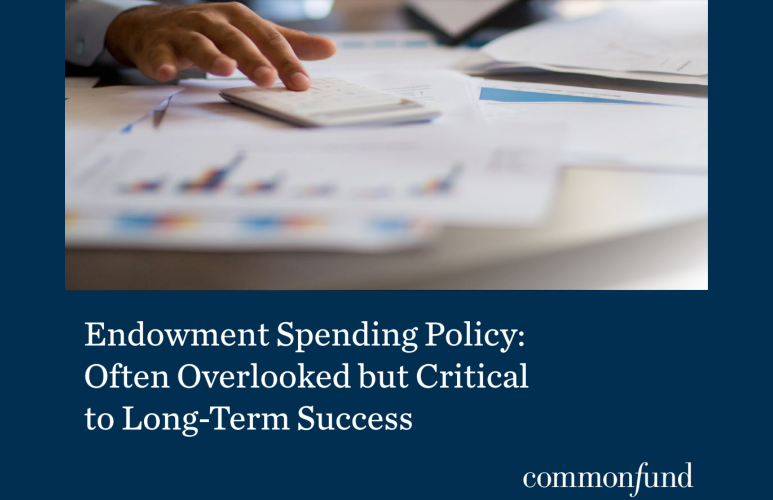Strategic financial policy review too often involves reviewing only investment allocations without looking at spending policy. As a result, reviews do not take into account the reliance of an education institution’s operating budget, or spending, on the endowment. That’s a mistake, as spending can be affected by volatility of the endowment’s returns.
Education institutions tend to default their spending models to calculations that rely on moving expenditure averages over a 12- or 20-quarter moving average, with some tweaking their calculations based on inflation or changes to the endowment market value. That model works well when there are strong investment returns, a low inflation rate, high levels of giving and an increasing appetite for education services, according to Endowment Spending Theory: Often Overlooked but Critical to Long-Term Success, a report from Wilton, Conn.-based asset management firm Commonfund.
But absent these conditions, spending and investment activity can diverge, resulting in missed opportunities. The report authors suggest that those responsible for spending consider several aspects of their disbursement policy. Basic considerations include the percentage of the operating budget endowment distributions cover and how that percentage has changed over the years, whether the endowment’s role in covering spending will increase and the pace and size of gift flow into the endowment.
Additional financial resource questions include review of annual fund giving levels, the mix of restricted versus unrestricted gifts and the education institution’s access to other funding sources, such as lines of credit.
Report authors also recommend establishing clear goals for spending policy, whether those are maximizing long-term spending, maximizing short-term spending, focusing on consistency of spend by limiting expenditure volatility and drawdown or a balance between the three considerations.
Furthermore, those controlling spending should conduct liquidity analysis and financial stress tests at least once a year, with additional focus on the potential impact of reduced spending, whether on a one-off or a consistent basis. Underlying considerations might also include the maximum tolerable drawdown in institutional support.
Even before all this, there needs to be better communication between stakeholders. Entities within an institution that control spending are not under the umbrella of – or even in communication with – the investment committee. As a result, spending is slower to reflect actual opportunities.
“As a means to potentially increase support of the operating budget over time, endowment portfolios may be able to increase allocations to growth assets – and as a result, increase the probability of long-term success – without the commensurate increase in “risk” by decoupling the spending formula away from the market value,” the report authors write.
According to the report authors, an education institution’s spending policy should ideally:
- Provide a consistent and growing amount of annual support during most years
- Support ongoing operating budgets while leaving enough capital within the endowment to allow compounding benefits for future generations
- Enable the institution to take as much risk with its endowment as it needs to meet long-term return objectives
- Allow consistent allocations, especially during periods of significant adverse market activity.
A full copy of the report is available here: https://info.commonfund.org/endowment-spending-policy










